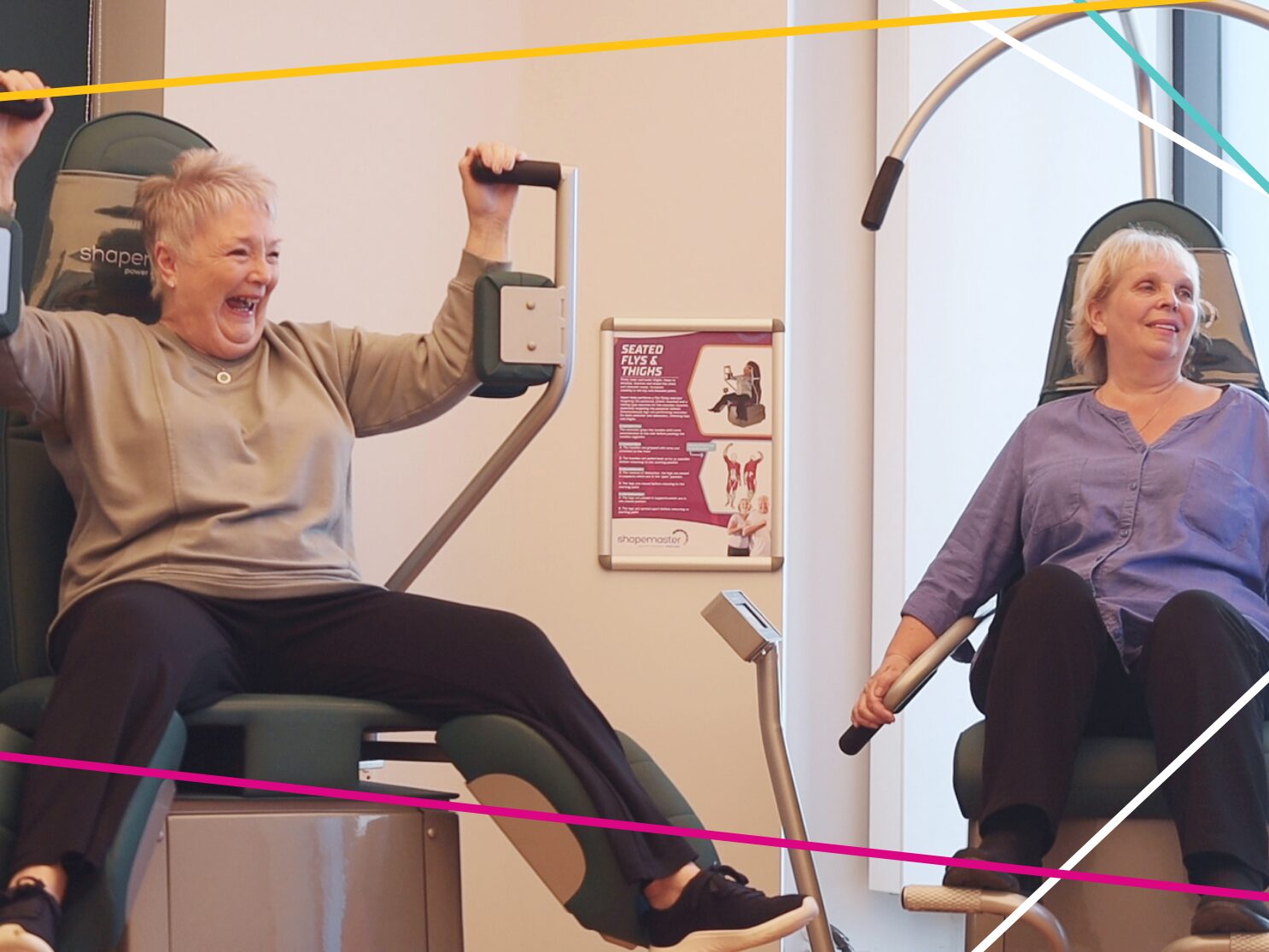Innerva provides niche exercise equipment designed for people who don’t go to a gym or a leisure centre.
If that sounds at odds with being a strategic business partner with GM Active, whose members run 99% of the publicly owned fitness and leisure facilities and assets across Greater Manchester, there is solid logic in the affiliation, as Laura Childs, Innerva’s Marketing and Communications Manager, explains.
Power assisted exercise equipment (not unlike the principle of an electric bike) allow an older demographic and people with one or more long term conditions embark on a journey to better health – and even find happiness.
Here, Laura outlines how that becomes possible, and why Innerva and GM Active make perfect partners.

First and foremost, we view the work that GM Active is doing, not only in Greater Manchester but in the industry as whole, as hugely important from a health and physical activity perspective because of the impact it’s going to have on population health, particularly among the older population.
Our Innerva solution is aimed at a completely different demographic to those who regularly frequent a leisure facility. It’s aimed at the people who don’t.
They don’t for two main reasons – one is that they have a long term health condition, or they have a number of health conditions and don’t see a traditional gym environment as accessible to them. They’re intimidated, they need something less scary and somewhere more welcoming to start their journey to being more active.
I’ve spent 19 years of my career in Greater Manchester, and I sat on GM Active’s marketing sub group before I moved to Innerva, and that’s really helped me to understand there are so many similarities in what we both want to achieve.
So, our mission is to improve the health of older people within the whole of the UK, and further afield because we export, and that is very much aligned with a great many of GM Active’s core ambitions.
We are here to support the message and increase awareness about the importance of providing the means for an older demographic, and people with long term health conditions to be more active.
While we don’t currently have equipment in any GM Active sites, we have experience of dealing with the ‘health’ part of the pivot to active wellbeing.
We’ve had a suite of equipment in a brain and spinal injuries clinic near Salford Royal for about 10 years.
We have started a pilot project in Wishaw in Lanarkshire with Strathclyde University and Wishaw Hospital where three of our pieces of equipment have gone on to an acute stroke ward as part of a technology enriched rehabilitation hub.
It has been modelled by Strathclyde University around health improvement and/or or outcomes for stroke patients to assess the impact this type of model can have.
But equally where do those patients then go when they’re discharged? NICE (the National Institute for Clinical Excellence) guidelines have changed this year from 45 minutes per day, five days a week of physical therapy or exercise therapy to three hours, five days a week.
This is about a journey over a period of time after being discharged. What we’re trying to do is look at the learnings from this and work with organisations to answer the question. Is there an opportunity to go into publicly owned facilities, or into leisure centres?
Partnerships only start to get off the ground in the first 12 months and I think we’re looking further ahead than that as to how we can move forward and hopefully support with Innerva equipment within some GM Active facilities.
But if not within the facilities, maybe within more hospital facilities where we can try and become a partner that bridges some of the gaps between health and leisure.
We operate in a niche market, we’re very targeted, and we’re already working with health and rehabilitation partners.
So, I think the answer to that is twofold. One is the learnings from working with specific condition groups and the other is that we are heavily immersed in research and development.
I’ve mentioned Wishaw already. We also work with the Advanced Wellbeing Research Centre at Sheffield Hallam University, which we have done for a number of years, conducting a large number of studies on people with neurological conditions and the benefits not just of our equipment but physical exercise, physical activity and repetitive movement.
And we work with Manchester Metropolitan University where we’ve developed two pieces of kit for wheelchair users so that they can exercise.
The whole collaboration piece is already there, but we’re trying to support it to achieve even higher awareness of the importance of GM Active and the work that we’re both doing in the space around providing for those people who need it most.
Partnerships are a two-way thing, so we’d like GM Active to continue supporting our messaging, which is exactly what it is doing.
We don’t tend to bombard people with messaging that is irrelevant to them, but I think the communication of our message encouraging people to have a look at what we are all about is important.
Being on members’ radars isn’t about selling equipment, we’re not here for that, as strange as it may sound.
I know from my time within GM Active, that the people who are involved are passionate about changing the leisure/health landscape.
If you want to know more about Innerva, you can find their website here.